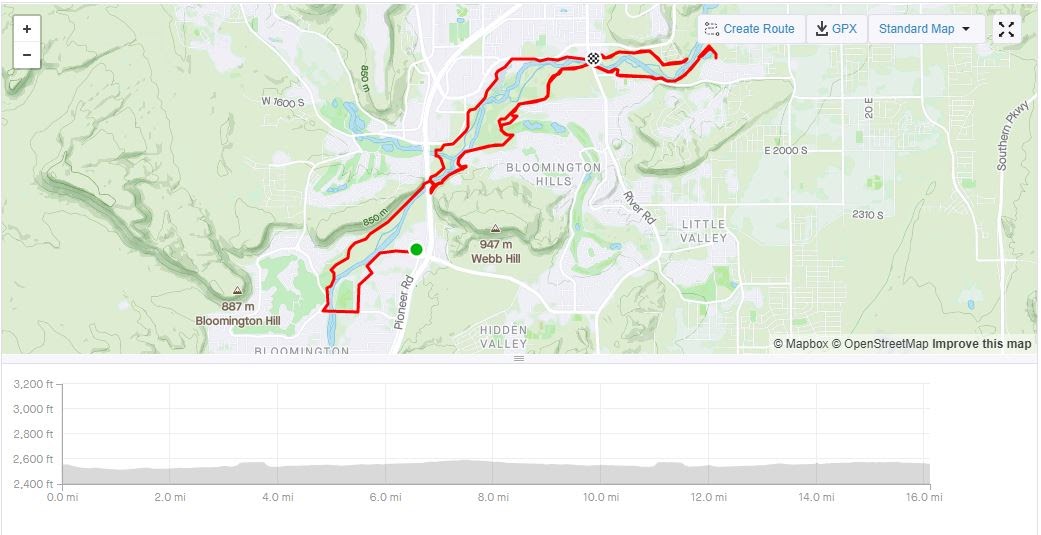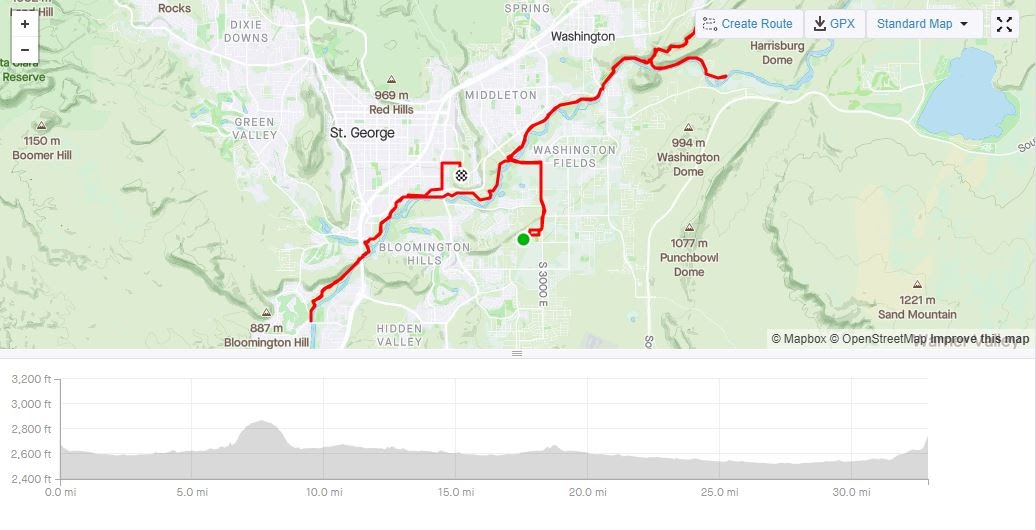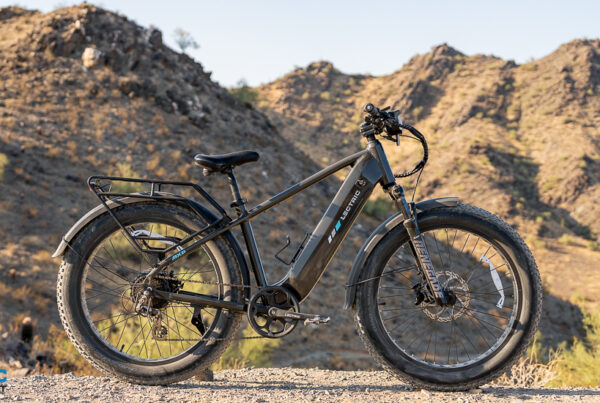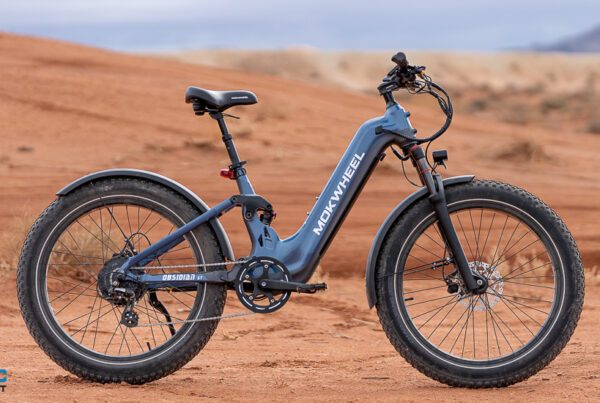
Strava data of the Roadster’s max assist range test.
On max assist (PAS level 5) the Roadster made it 16.11 miles and almost exactly an hour before it ran out of juice, which considering the battery size and the intended use of the e-bike isn’t too shabby.
I did this test mid-morning on a Monday that saw an unusually high number of people on our local bike path in St. George, which hampered the average speed a bit. I don’t see that as a problem though, as the Roadster was built for high density urban environments. If anything, the congestion I pedaled through made the test more realistic.
We gave the Roadster to the boss’s son, Josh, for the minimum assist level (PAS 1) range test, and he clocked 32.91 miles at an average speed of 16 mph before it ran out of battery. That ride took him 2:03 and he also encountered a good bit of traffic on the path. Josh is a local NICA racer, and at 14-years old and 130lbs, his result might be more representative of what a smaller, fitter person could expect from the Roadster.


Strava data of the Roadster’s PAS 1 range test.
For us at EBR, the most noticeable thing from the two range tests is their brevity. Neither the 16.1 mile range we got from PAS 5 or the 32.91 mile range in PAS 1 are particularly stellar results when compared to other e-bikes in the same category as the Roadster. The Rad Mission 1 we tested in December, for example, clocked more than double the mileage in PAS 5 — a whopping 37.22 miles. But what you get in range with the Mission, you pay for in aesthetics. The Roadster’s smaller battery blends seamlessly into the frame, making for an e-bike that hardly looks like an e-bike. On the Mission, which comes with a twice as large (504Wh) battery, the power unit is hard to miss as it’s just bolted onto the frame. In EBR’s opinion, the Roadster’s stealthy profile is a big part of what makes this e-bike cool. Fitting a bigger battery in the frame (if that’s even possible without jacking the price way, way up), would risk ruining the bike’s character.
For some people, it’s going to be hard to see past the Roadster’s relatively short range. If you fall in that category, that’s OK; Ride1UP makes a number of e-bikes that’ll go for quite a bit longer. The point is, this e-bike was not built as a long-hauler. The Roadster is a stealthy, snappy short-range electric city bike built to dart in and out of traffic and look good while doing it. And in that respect, Ride1UP hit it out of the park.
A bit of napkin math shows us that on paper, EBR’s range test times are about right. You can get a good idea of a e-bike’s range by understanding the relationship between a battery’s watt hour rating and a motor’s wattage. A 350Wh battery, for example, should be able to power a 350W motor at full gas for one continuous hour before it runs out of juice. So the Roadster’s 252Wh battery, on paper and in a controlled environment, should be able to power the 350W hub motor for 0.72 hours at max power before running dead. Add the aid of my pedaling and a few downhill sections, and the real world range at PAS 5 we recorded is almost exactly one hour.








